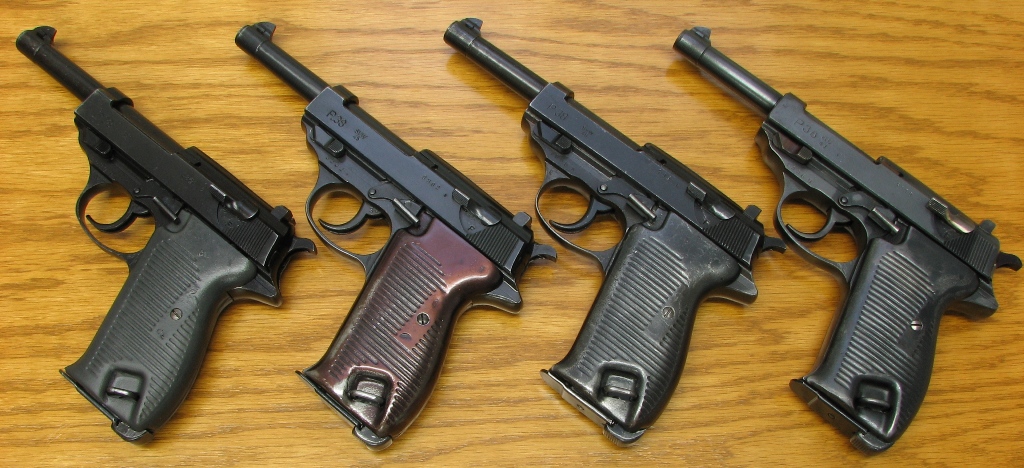
French Production of P.38s at the Mauser Factory 1945 - 1946

Following World War II Germany was divided into four occupation zones, one for each major Allied power: the United States, the Soviet Union, England, and France. The Mauser factory was located in the French zone. Almost immediately after the war ended the French directed Mauser to resume P.38 (and other weapon) production which ended in 1946 after increasing protests from the other Allies (mainly the Soviets). The French Mauser P.38s were primarily assembled from spare parts already on hand, or those which required little further processing. There is no fundamental difference between the wartime and post-war Mausers with the exception of the grip panels, which seem to be uniquely French.
Among the French Mausers one will find a variety of slide codes, although the svw code is by far the most common as it was the Mauser factory code at the end of the war. P.38 researcher and collector Orvel Reichert reports 83% of reported pistols have the svw code, 7% the byf44 code, 5% the FN ac43 code, 4% the FN ac44 code, and the very small remainder have a wide variety of WW2 codes, blank slides, and post-war slides. The finishes of the French Mausers range from various colors of parkerization, blued, or rarely the late-war German phosphate. Almost all are import marked by Interarms, usually under the slide rail where it is not easily seen.
Individual parts that would have been acceptance marked by the Germans during the war (frames, slides, barrels, and locking blocks) may or may not bear German markings, depending upon where they were in the assembly process. There does not seem to have been any systematic attempt to deface or remove any existing German markings already present. The French continued with the German serial number system, starting with the "g" block (presumably 1g would have been the first French Mauser). The g, h, and i blocks were produced in 1945, transitioning to the k and L blocks in 1946. The letter "j" was not used. The last known serial number of a French Mauser is 500L. There are a few interesting markings found on French Mausers, such as the the "circled flaming grenade" (a police marking) and the "clover leaf stamp," of which the meaning is not currently known. The French proof mark, a star, is usually found on the same parts the Germans proofed - the slide, barrel, and locking block.
The table below summarized the markings of a few French P.38s. It is interesting to note that there seems to be a degree of randomness (as yet unexplained) as to the markings the French used. For example, most pistols will have the French star proof on the slide, while others will not. A few have various small parts serialized (triggers, hammers, etc.) while most do not. In the L block the serial number is not seen on the slide or barrel at all, and the frame serial number has been moved to the tang.

![]()
Serial number 4338g ac43 FN slide
This pistol is standard (for the French) with the exception of the FN manufactured slide. The frame, slide, and barrel are serialized, but no small parts are. It has pressed steel grips and the French proof on the right side of the slide.
Serial number 5899g byf44
The German WaA/135 acceptance marking is visible on the slide next to the French proof. The clover leaf stamp is found on the frame under the grips.
Serial number 8302i svw45
Uncommon copper-colored grips and some serialized small parts differentiate this pistol from most others.
Serial number 5690h svw45
This pistol saw post-French use by the Austrians as indicated by the "BH" mark next to the frame serial number. It wears Mauser wartime plastic grips and also has the clover leaf stamp.
Serial number 4958k svw46
This svw46 has the circled flaming grenade marking on the trigger guard - it's assembly line brother 4959k does not.
Serial number 63l svw46
At this point near the end of production the serial number has been eliminated from all parts except for the frame.
![]()